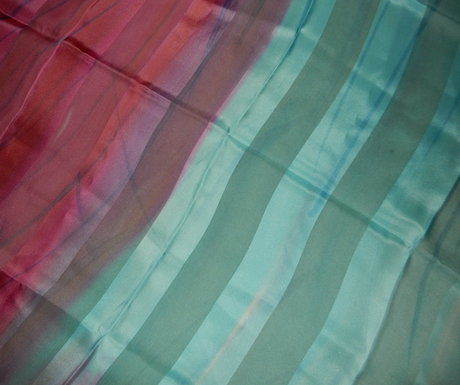The 505-mile Rhone River was used by Greek and Roman traders, so today river cruisers can experience antiquity, artistry, history, and some of the best food and wine in Europe. Beginning in Beaune and ending in Avignon, I decided to experience the region by boat and discover both the known and lesser-known charms of a waterway that has evolved from ancient trading to contemporary traveling.
A Uniworld boat S.S. Catherine is a 159-passenger boutique riverboat, or floating 5 plus star hotel. Uniworld has the highest staff-to-guest ratio of the many riverboat companies plying European waterways. Even so, it was a surprise to find two butlers on board to serve guests in the six suites. For me, a stateroom with a veranda was the apex of elegance. If a butler were added to my journey, I would have to research what butlers do aside from packing and unpacking. That was a scary thought given my casual packing habits and the utilitarian lingerie of a woman who travels alone. Without a butler, service was immediate, impeccable, and anticipatory. How did the maid know I longed for a pot of herb tea on my veranda? I only sneezed five times plodding down the hallway after a determined tour of Beaune with a nasty cold.
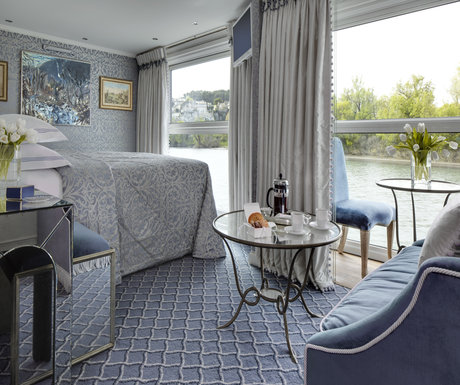
A beautiful place to die
Beaune is an ancient and historic walled city with half of the ramparts and battlements intact. Roman and pre-Roman ruins lie all around town, but I was most interested in the insight into medieval medical care offered by Hotel Dieu. Although their methods may have shortened life rather than extended it, Hotel-Dieu was a beautiful and comfortable place to die. The nuns were lavish with physical comforts, and extravagant religious art offered solace for souls ready to move into the next life.
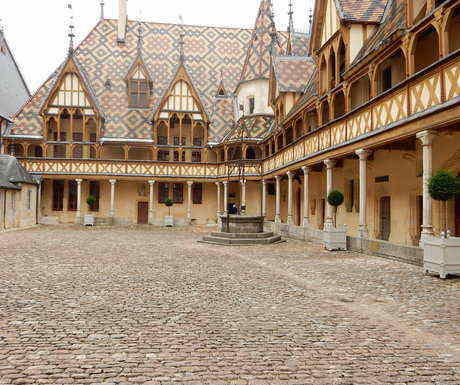
Built in 1443, the hospital is a pair of two-story buildings set around a stone courtyard, an acclaimed example of Northern Renaissance civic architecture. The inside has been restored to the original with famous panel paintings in their original places. The Hall of the Poor is furnished with beds made up with warm, comfortable bedding and draped with red curtains. The beautifully designed but functional patient care items such as jugs and wash basins and the wooden chair and table beside each bed show that the indigent were treated with dignity.
Beds face a remarkable polyptych altarpiece by Roger van der Weyden of Tournal. The polyptych was normally closed in the shadows of the chancel. When a patient entered his final hour, consecrated candles lit up the chancel, the nuns would kneel for a final prayer, and a priest would open the panels. The last thing the dying person saw was the Archangel opening the gates of paradise. The structure is so sound that the buildings were used as a hospital until the 1970s.
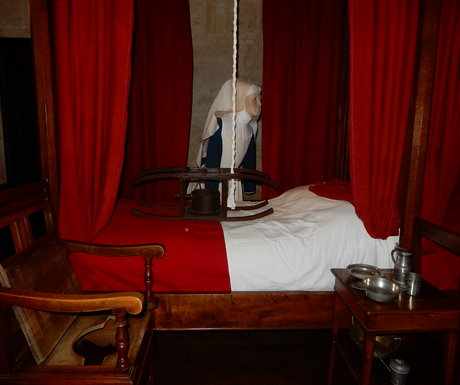
Lyon illuminated
Obviously, Lyon has changed since the days of Julius Caesar. A nighttime view from the top of Fourviere Hill illuminates the bridges and the city where the old and new co-exist in a symphony of lights reflected in the river. On the hill, the Basilica of Notre-Dame de Fourviere was built between 1872 and 1884 on the site of the Roman forum of Trajan. Fourviere has been a Christian pilgrimage site since a shrine dedicated to Our Lady was erected in 1170. When the city of Lyon was spared in the 1870 Franco-Prussian War, the community, in gratitude, built the present basilica beside the ancient chapel. A tower surmounted by a golden statue of the Virgin Mary was added. Today, few remember the ancient, pagan roots, but the view often attracts too many visitors to reflect on its wonders in peace. Therefore, a night visit is ideal for those who wish to fill their souls with the view and have private thoughts in a space sacred to so many through the centuries.
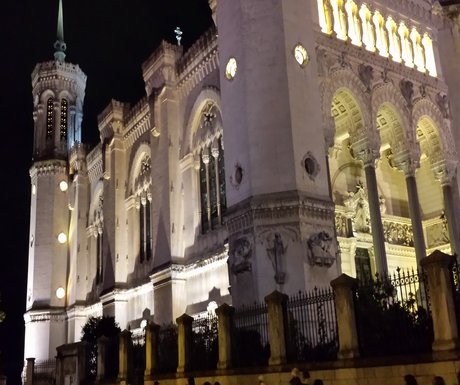
The city of silk
Lyon has been the City of Silk since the 1600s when the town had 10,000 silk looms. Ancient traboules (covered passageways) were used and perhaps enlarged by silk workers to transport goods and water for silk production. At one time, one-third of the population was engaged in the silk business. The Maison des Canuts (House of the Silk Workers) is a housed in the late 19th Century headquarters of the Union of Silk Weavers and presents a 500-year history of silk production in Lyon and its evolution.
Silk screening has been practiced from the 1700s and endures today. People come from all over the world to see artisans creating masterpieces of color from squares of sheer, white silk. LAtelier de Soierie has been producing artistically acclaimed silk items since 1895 and seemed the most likely place to purchase the scarf of a lifetime. The problem was narrowing my selections to my credit card maximum. I am not a shopper. I never overbuy. I put down my armload of scarves and retreated to a nearby cafe to contemplate what would have been a record-breaking spree. With sorrow, I returned to the boat empty handed.
The maid brought me another pot of herb tea. I looked at the agenda. LAtelier de Soierie was scheduled to board the boat and provide a lecture about the silk industry, and they would have items to sell. I took one credit card, the one with the lowest spending limit, and told myself I deserved a scarf, one scarf, the perfect scarf. The lobby was mobbed with women seeking the perfect scarf. Mine was neatly folded on a table. Indeed, it was perfect. The colors were those of the Rhone at different times of day, from a bright blue morning, to a splendid rosy sunset. I now wear the colors of the river that I saw from my veranda like a personal flag.
